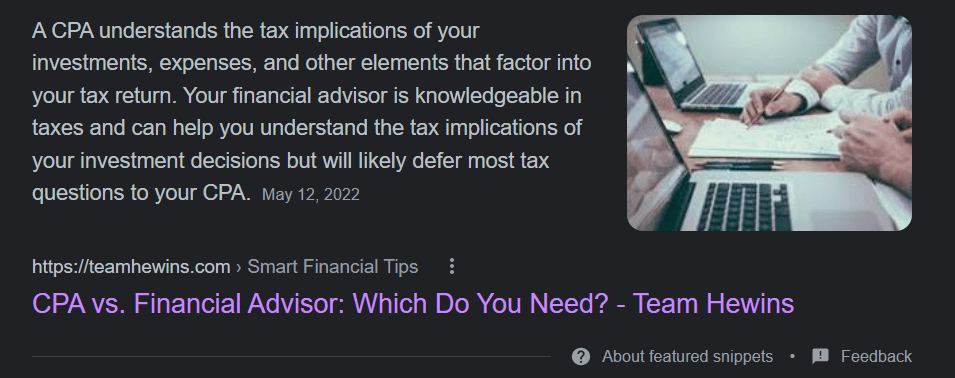Google’s First Core Update for 2022 Now Complete: What You Should Know
“Google algorithm update” is one of the most frustrating phrases a content marketer can hear.
Web content can serve many purposes, but undoubtedly one of the most common goals of any long-term content strategy is to drive organic search traffic. The practice of search engine optimization—writing and reworking pages to rank for specific keywords—is never an exact science. And just when you think you’ve got it figured out, along come the fine folks at Google with an update.
Google announced on June 9, 2022, that its May core update is now complete after two weeks of rolling it out. You can read the full update from Google here, but it won’t give you any details as to whether you can expect your search engine rankings to drop (or rise).
So how should you react?
Don’t panic.
While Google rolls out core updates several times a year, this is its first completed core update since November of 2021. The delayed timing of the update combined with reportedly high levels of SERP (search engine results pages) volatility led many experts to believe this update is a hefty one.
That said, the rollout is now 100% complete. If you haven’t seen any immediate impact so far, then you are unlikely to see any sudden drop in search traffic any time soon.
In fact, many companies are seeing a slight uptick in search visibility. According to Google, this update is intended to reward sites with helpful content rather than to penalize sites with issues or subpar content. However, some websites are bound to see traffic drop as other sites climb in the rankings.
Why does Google make broad core updates?
Somehow more frustrating than learning that you’ve been negatively affected by Google’s May core update is Google’s advice for handling traffic drops. Unfortunately, Google does not typically release specific details about what its updates entail and its advice for content developers has been the same since 2019: write good content.
All we know for sure is that the update is intended to ensure searchers get the best experience possible. When the search engine giant first started rethinking its algorithm two decades ago, websites often attempted to deceive the search engines by simply repeating a keyword multiple times, whether or not the web page provided any benefit to the searcher.
Today, Google has gone above and beyond to keep deceptive tactics like these out of common usage. The algorithm is informed by AI and natural language processing capabilities to prioritize the most relevant, helpful content at the top of the SERPs.
What negative effects can I expect?
Not sure if you’re experiencing the after-effects of Google’s core update? Check out this guide to using Google’s Search Console to analyze traffic drops or a tool like Semrush or Ahrefs. Look for any sudden drop in the past couple of weeks, and check again two weeks later to see if the drop levels out again.
Note that many people are currently reporting seeing their featured snippets most affected. (These are the informative short clips of information Google previews on your behalf in hopes of helping you to quickly answer a question, as seen below.)

Most likely, Google is attempting to ensure featured snippets do not use deceptive techniques to rank well, while truly helpful descriptions and definitions are highlighted.
How can you correct and protect your website?
Another frustrating phrase for marketers and non-marketers alike: it depends.
For the most part, it helps to be as proactive as possible and prevent algorithm updates from having a major effect on your rankings. Some ways to be proactive include:
- Regular content publishing without major volatility in publishing frequency
- Routinely assessing, updating, and optimizing older content pieces
- Only publishing reputable, helpful and thought-provoking content that is 100% original
High-quality content is your best line of defense. While keyword research should be completed beforehand, in some cases a keyword strategy is arguably less important than an original, well-researched article.
In addition, you shouldn’t lean on a single keyword or keyword group for your organic traffic. Try to vary content and keyword strategies to optimize for each stage of your conversion funnel and for different use cases. That way, if one keyword takes a hit or increases in competitiveness, you still have an ace up your sleeve.
If you’ve already seen penalties or ill effects from a core update, you won’t find a ton of helpful information at the source. Our best advice: test, test, and test. For example:
- For each blog that’s dropped in the SERPs, try testing a change to one (and only one) different element across several blogs and see if you can hone in on a solution.
- Check on competitor webpages that are now ranking for your keyword focus. Try imitating a technique they use—such as bullet points or charts—to see if this makes a difference.
—
All in all, the art and science of SEO requires skill and experience which many companies don’t have the budget to hire for. A fractional approach to marketing strategy and execution can help prevent events like Google’s core updates to posing a threat to your marketing.
RELATED: Fractional Marketing – What to Know before Making a Hire
For more information about fractional marketing, contact our CEO Deb Andrews for a consultation.





